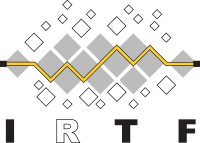Charter
The Internet Society’s Global Internet User Survey 2012 reveals that a large majority of respondents believe that Internet access should be considered a basic human right. However, in the reality of today’s Internet, the vision of global access to the Internet faces the challenge of a growing digital divide, i.e., a growing disparity between those with sufficient access to the Internet and those who cannot afford access to the essential services provided by the Internet.
Access problems often result from sparsely spread populations living in physically remote locations, since it is simply not cost effective for Internet Service Providers (ISPs) to install the required infrastructure for broadband Internet access to these areas. In addition to the physical limitations of terrestrial infrastructures (mainly due to distance) to provide last mile access, remote communities also incur higher costs for connection between the exchange and backbone network when using wired technologies. A large exchange may accommodate many users and allow for competition between service operators; in contrast, a rural/remote broadband exchange often does not offer economies of scale, raising the costs per user. Thus, although service requirements for customers in rural/remote areas and cities are identical, the delivery and pricing mechanisms need to be different. This requirement is also applicable to urban areas where cost of access is considered as a major impediment for wider access.
Addressing digital exclusion due to socio-economic barriers is also extremely important. The United Nations revealed the global disparity in fixed broadband access, showing that access to fixed broadband mainly in less- developed countries costs almost 40 times their national average income. This problem is even encountered in developed countries, where many individuals find themselves unable to pass a necessary credit check or live in circumstances that are too unstable to commit to lengthy broadband contracts.
There are policy and research challenges at the level of social science, economics and technology to the realisation of a future Internet capability that will offer unfettered access to all parts of society. There can be no single uniform solution that embraces all types of user and all locations, given the impact that social aspects (such as different human needs and aspirations) have on building technological solutions. It is important to emphasize that there also is room for innovation and experimentation in policy. The major obstacles to more persistent and affordable access in sub-Saharan Africa, parts of Asia, the Middle East, and other regions are not technological but regulatory. There is a need for innovative regulation and reformed public policy to enable new business models and wireless technologies to flourish. Moreover, the social science dimension of an universal Internet must not be forgotten, capturing the impact of human values on the design decisions of underlying solutions on the one hand and the impact of the Internet on the human value network on the other hand.
Objectives
The Global Access to the Internet for All Research Group (GAIA) is an IRTF initiative that aims
- to create increased visibility and interest among the wider community on the challenges and opportunities in enabling global Internet access, in terms of technology as well as the social and economic drivers for its adoption;
- to create a shared vision among practitioners, researchers, corporations, non governmental and governmental organisations on the challenges and opportunities;
- to articulate and foster collaboration among them to address the diverse Internet access and architectural challenges (including security, privacy, censorship and energy efficiency);
- to document and share deployment experiences and research results to the wider community through scholarly publications, white papers, presentations, workshops, Informational and Experimental RFCs;
- to document the costs of existing Internet Access, the breakdown of those costs (energy, manpower, licenses, bandwidth, infrastructure, transit, peering), and outline a path to achieve a 10x reduction in Internet Access costs especially in geographies and populations with low penetration.
- to develop a longer term perspective on the impact of GAIA research group findings on the standardisation efforts at the IETF. This could include recommendations to protocol designers and architects.
Chairs
GAIA is chaired by Jane Coffin and Kurtis Heimerl.
Mailing List
The GAIA mailing list is gaia@irtf.org. To subscribe or access the list archives, visit the mailman page.
Datatracker
Documents and meeting materials for the GAIA can be found on the IETF datatracker.
Web Page
Additional GAIA information is available at https://sites.google.com/site/irtfgaia/.
Timeline
The GAIA was chartered on 2014-10-15.
